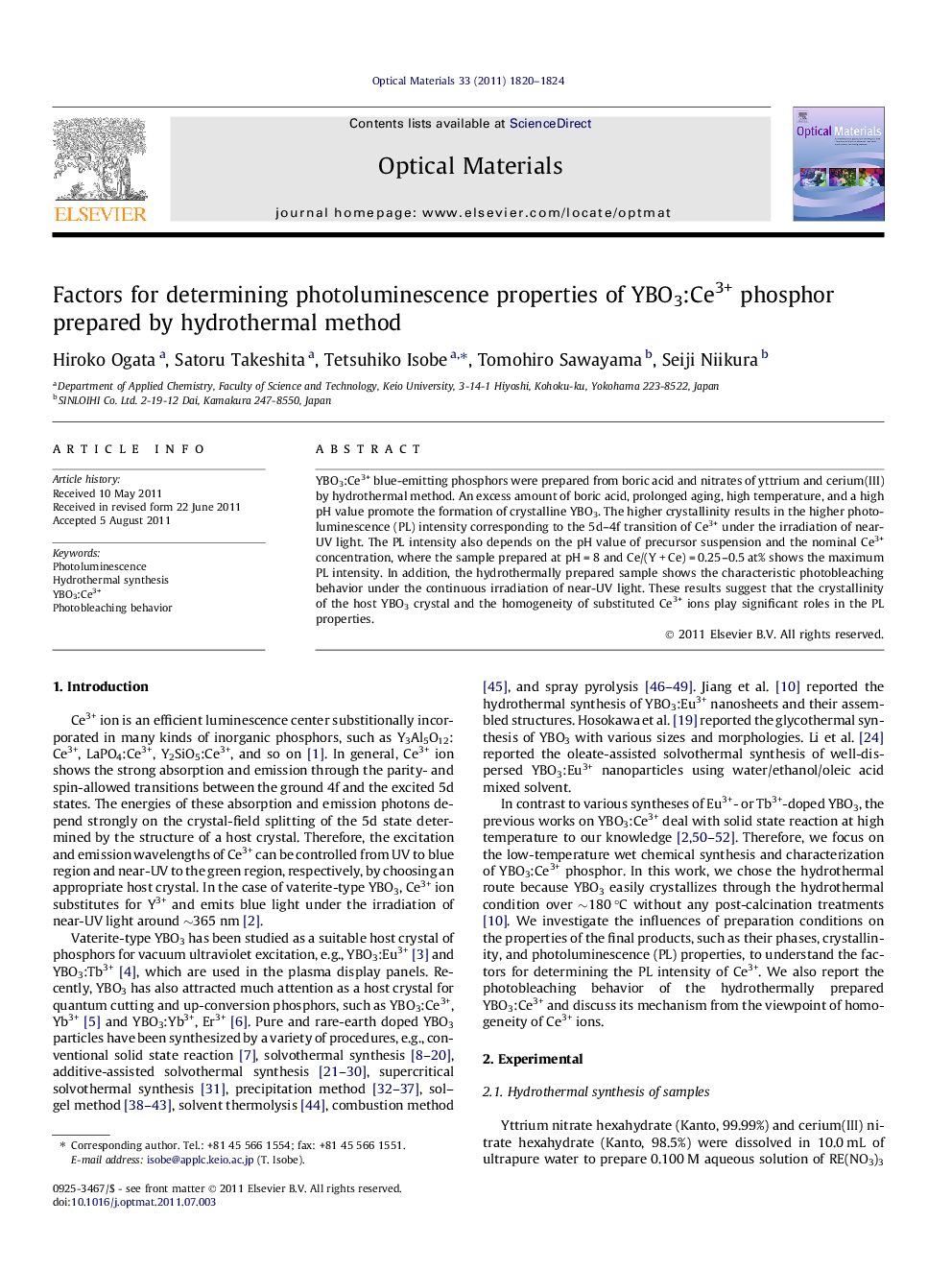| کد مقاله | کد نشریه | سال انتشار | مقاله انگلیسی | نسخه تمام متن |
|---|---|---|---|---|
| 1495326 | 992932 | 2011 | 5 صفحه PDF | دانلود رایگان |

YBO3:Ce3+ blue-emitting phosphors were prepared from boric acid and nitrates of yttrium and cerium(III) by hydrothermal method. An excess amount of boric acid, prolonged aging, high temperature, and a high pH value promote the formation of crystalline YBO3. The higher crystallinity results in the higher photoluminescence (PL) intensity corresponding to the 5d–4f transition of Ce3+ under the irradiation of near-UV light. The PL intensity also depends on the pH value of precursor suspension and the nominal Ce3+ concentration, where the sample prepared at pH = 8 and Ce/(Y + Ce) = 0.25–0.5 at% shows the maximum PL intensity. In addition, the hydrothermally prepared sample shows the characteristic photobleaching behavior under the continuous irradiation of near-UV light. These results suggest that the crystallinity of the host YBO3 crystal and the homogeneity of substituted Ce3+ ions play significant roles in the PL properties.
► Hydrothermal synthesis of YBO3:Ce3+ blue-emitting phosphors.
► Excess boric acid and high pH result in high crystallinity.
► High crystallinity results in strong photoluminescence.
► Photobleach and small optimum Ce3+ content verify inhomogeneous distribution of Ce3+.
Journal: Optical Materials - Volume 33, Issue 11, September 2011, Pages 1820–1824